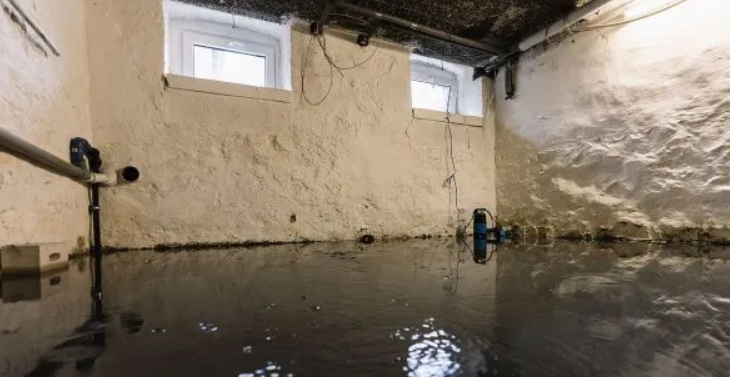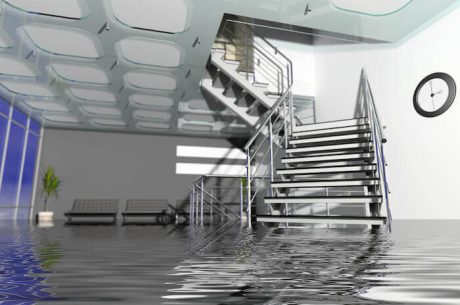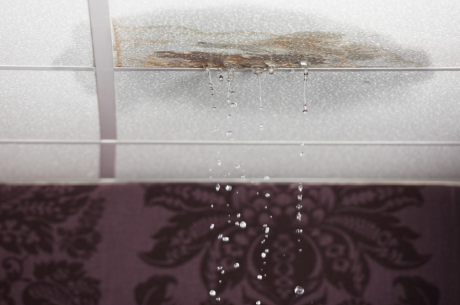Understanding Category 3 Water Damage: A Restoration Professional’s Guide
When disaster strikes, water damage can wreak havoc on homes and businesses alike. As restoration professionals, we understand the urgency and complexity that comes with such events. Among the various types of water damage, Category 3 stands out as the most severe and hazardous. Commonly referred to as “black water,” Category 3 water damage involves water that is highly contaminated and poses significant health risks.
Whether caused by sewage backups, flooding from rivers or streams, or standing water that has been allowed to stagnate, Category 3 water damage demands immediate and expert attention. The contamination can contain harmful pathogens, bacteria, and viruses, making the affected areas unsafe for occupants and workers without proper protective measures.
In this guide, we will delve into the critical aspects of Category 3 water damage, from identifying its sources and dangers to the meticulous restoration process required to ensure safety and restore property to its pre-damage condition. Our aim is to equip you with the knowledge needed to act swiftly and effectively in the face of this severe form of water damage, highlighting the importance of professional intervention and adherence to industry standards.
What Is Category 3 Water Damage?
Category 3 water damage, often referred to as “black water,” is the most severe and dangerous type of water damage. This category of water damage involves water that is highly contaminated with harmful substances, including pathogens, bacteria, and viruses. The sources of Category 3 water damage typically include:
Sewage Backups: One of the most common sources, sewage backups can introduce a host of harmful microorganisms into your home or business.
Flooding from Natural Disasters: Water from rivers, streams, and ocean surges during floods is classified as Category 3 due to the vast array of contaminants it can carry.
Stagnant Water: Water that has been standing for a prolonged period can become a breeding ground for bacteria and mold, elevating it to Category 3.
Water Intrusions from Outdoor Sources: Any water entering from the outside, especially in significant amounts, is considered Category 3 due to potential contamination from soil and other pollutants.
The primary concern with Category 3 water damage is the serious health risk it poses. Direct contact with or inhalation of airborne particles from this type of water can lead to severe illnesses, making immediate and professional remediation crucial.
How to Identify Category 3 Water Damage
Identifying Category 3 water damage quickly is vital to minimize health risks and property damage. Here are key indicators to help you recognize this severe form of water damage:
Visible Contaminants: If the water appears murky, has debris, or contains visible particles, it is likely contaminated.
Foul Odor: A strong, unpleasant smell often accompanies Category 3 water due to the presence of sewage or other organic matter.
Source of Water: Any water originating from sewage systems, rivers, streams, or external flooding is automatically considered Category 3.
Color and Appearance: Category 3 water is typically dark in color due to the high level of contaminants.
Health Symptoms: If you or others in the vicinity experience sudden health issues like nausea, vomiting, or respiratory problems, it could be a sign of exposure to black water.
What Are the Dangers of Blackwater?
Blackwater, or Category 3 water, poses significant dangers due to its high contamination levels. It can contain harmful pathogens, including bacteria, viruses, and parasites, as well as toxic chemicals. These contaminants can cause severe health issues, ranging from gastrointestinal illnesses to more serious infections. The presence of mold and fungi, which thrive in damp environments, further exacerbates health risks and can lead to respiratory problems and allergic reactions.
How Does Category 3 Water Damage Spread?
Category 3 water damage spreads quickly and extensively, often exacerbated by the materials it comes into contact with. Porous materials like drywall, carpets, and insulation absorb the contaminated water, creating a breeding ground for bacteria and mold. The spread can also be accelerated by air circulation, as airborne pathogens can be dispersed throughout the property. Additionally, if not promptly addressed, the contamination can infiltrate hidden areas such as behind walls, under floors, and within HVAC systems, making remediation even more challenging.
How Does Category 3 Water Affect Health?
Exposure to Category 3 water can lead to a wide range of health issues. Immediate effects may include skin irritation, eye infections, and gastrointestinal problems such as nausea, vomiting, and diarrhea. Long-term exposure or inhalation of airborne contaminants can result in respiratory issues, including asthma, bronchitis, and other lung infections. In severe cases, exposure can lead to life-threatening conditions, particularly for individuals with weakened immune systems, the elderly, and young children.
How to Handle Category 3 Water Damage in New Jersey
When you have a Category 3 Water Damage in New Jersey, Our technicians are trained to use proper protocols to carry out water damage mitigation and we will reduce the risk of disease or infection with thorough cleaning and disinfection. Make sure you give us a call as soon as you notice Category 3 Water Damage problem in New Jersey at (877) 750-7876.
Why Can’t I Clean Black Water Damage on My Own?
Cleaning black water damage on your own is highly discouraged due to the extreme health risks and complexity involved. Here’s why:
- Health Risks: Without proper protective equipment, you risk direct exposure to harmful contaminants, which can lead to severe health issues.
- Incomplete Cleanup: Professional restoration teams use specialized equipment and techniques to ensure thorough decontamination and drying. DIY efforts often miss hidden moisture and contaminants, leading to mold growth and ongoing health hazards.
- Proper Disposal: Contaminated materials must be disposed of according to strict regulations to prevent further contamination. Professionals are trained in proper disposal methods to protect your property and the environment.
- Expertise and Certification: Certified restoration professionals follow industry standards to safely and effectively address Category 3 water damage. Their expertise ensures that all affected areas are properly sanitized and restored, preventing future issues.
- Attempting to handle black water damage without professional assistance can result in incomplete restoration, ongoing health risks, and further damage to your property. For these reasons, it is crucial to enlist the help of experienced restoration professionals to manage Category 3 water damage.
How restoration professionals handle Category 3 Water Damage
Handling Category 3 water damage requires a meticulous, multi-step process to ensure safety and thorough restoration. Here’s an overview of how restoration professionals tackle this challenging task:
1. Safety and Assessment
Protective Gear: Restoration professionals don full protective gear, including gloves, masks, and suits, to prevent exposure to harmful contaminants.
Initial Assessment: The first step involves a thorough assessment of the affected area to determine the extent of the damage and contamination. This includes identifying the source of the water and the scope of the affected materials.
2. Containment
Isolation: To prevent the spread of contaminants, professionals set up containment barriers around the affected area. This may involve sealing off rooms and using negative air pressure machines to contain airborne particles.
Safety Zones: Establishing safety zones ensures that contaminated areas are clearly marked and separated from clean areas, minimizing cross-contamination risks.
3. Extraction and Removal
Water Extraction: Using industrial-grade pumps and vacuums, professionals quickly extract standing water to prevent further absorption into building materials.
Removal of Contaminated Materials: Porous materials like carpets, drywall, and insulation that have been saturated with black water are removed and disposed of according to hazardous waste regulations.
4. Cleaning and Disinfection
Thorough Cleaning: All surfaces and materials in the affected area are thoroughly cleaned with industrial-strength cleaning agents designed to neutralize harmful bacteria, viruses, and other pathogens.
Disinfection: After initial cleaning, professionals apply specialized disinfectants to ensure that all contaminants are eliminated. This may include the use of biocides and antimicrobial treatments to prevent mold growth.
5. Drying and Dehumidification
Industrial Drying Equipment: High-powered air movers and dehumidifiers are used to dry the area completely. This step is crucial to prevent mold growth and further structural damage.
Moisture Monitoring: Professionals use moisture meters and thermal imaging cameras to monitor the drying process and ensure that all hidden moisture pockets are addressed.
6. Air Quality Control
Air Scrubbers: HEPA air scrubbers are used to filter out airborne contaminants, improving air quality and ensuring that any remaining particles are removed from the environment.
Ventilation: Proper ventilation is maintained throughout the restoration process to facilitate the removal of contaminants and promote drying.
7. Restoration and Reconstruction
Repairs: Once the area is fully cleaned and dried, professionals repair and replace damaged structural elements. This may involve replacing drywall, flooring, and insulation.
Final Inspection: A thorough inspection ensures that all work meets industry standards and that the property is safe for occupancy.
8. Documentation and Communication
Detailed Documentation: Restoration professionals document the entire process, including before-and-after photos, moisture readings, and a detailed log of work performed. This is essential for insurance claims and future reference.
Communication with Clients: Throughout the process, restoration teams maintain clear communication with property owners, providing updates and addressing any concerns to ensure transparency and satisfaction.
Handling Category 3 water damage is a complex and hazardous task that requires professional expertise. From the initial assessment to the final restoration, every step must be meticulously executed to ensure the safety of the property and its occupants. The health risks associated with black water are significant, and improper handling can lead to severe consequences, including ongoing contamination, mold growth, and serious health issues.
Restoration professionals are equipped with the necessary tools, knowledge, and protective equipment to manage Category 3 water damage effectively. We follow industry standards to thoroughly clean, disinfect, and restore affected areas, ensuring that all contaminants are eliminated and that the property is safe for occupancy.
If you find yourself facing Category 3 water damage, it is crucial to act swiftly and seek professional help. Attempting to handle such damage on your own can put you at risk and lead to further complications. Trusting in experienced restoration professionals ensures a comprehensive and safe resolution to this serious issue, giving you peace of mind and a restored, safe living environment.




 PuroClean Emergency Fire, Water and Mold Damage Restoration New Jersey
PuroClean Emergency Fire, Water and Mold Damage Restoration New Jersey